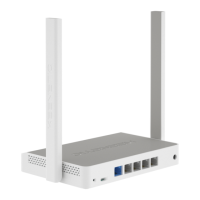Glossary
Address and Control Field
Compression
LCP conguration option that provides a method to negotiate the
compression of the Data Link Layer Address and Control elds.
Address Resolution Protocol is a protocol for mapping an Internet Protocol address (IP address) to
a physical machine address that is recognized in the local network. For
example, in IP Version 4, the most common level of IP in use today, an
address is 32 bits long. In an Ethernet local area network, however,
addresses for attached devices are 48 bits long. (The physical machine
address is also known as a Media Access Control or MAC address.) A
table, usually called the ARP cache, is used to maintain a correlation
between each MAC address and its corresponding IP address. ARP
provides the protocol rules for making this correlation and providing
address conversion in both directions.
Challenge-Handshake
Authentication Protocol
widely used algorithm for authentication, which provides the transfer
of indirect information about user password. CHAP provides better
security than Password Authentication Protocol.
Command Line Interface is a user interface to a computer's operating system or an application in
which the user responds to a visual prompt by typing in a command
on a specied line, receives a response back from the system, and then
enters another command, and so forth.
Compression Control
Protocol
is used for establishing and conguring data compression algorithms
over PPP.
Dead Peer Detection is a method that network devices use to verify the current existence
and availability of other peer devices.
DHCP is a network protocol that is used to congure network devices so that
they can communicate on an IP network. A DHCP client uses the DHCP
protocol to acquire conguration information, such as an IP address,
a default route, and one or more DNS server addresses from a DHCP
server. The DHCP client then uses this information to congure its host.
Once the conguration process is complete, the host is able to
communicate on the Internet.
DHCP-server manages a pool of IP addresses and information about client
conguration parameters such as default gateway, domain name, the
name servers, other servers such as time servers, and so forth. On
receiving a valid request, the server assigns the computer an IP address,
a lease (length of time the allocation is valid), and other IP conguration
parameters, such as the subnet mask and the default gateway.
Depending on implementation, the DHCP server may have three
methods of allocating IP-addresses:
Keenetic Lite (KN-1310) — Command Reference Guide
291
Glossary

